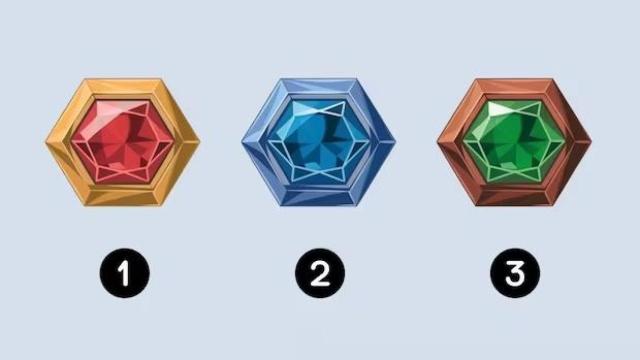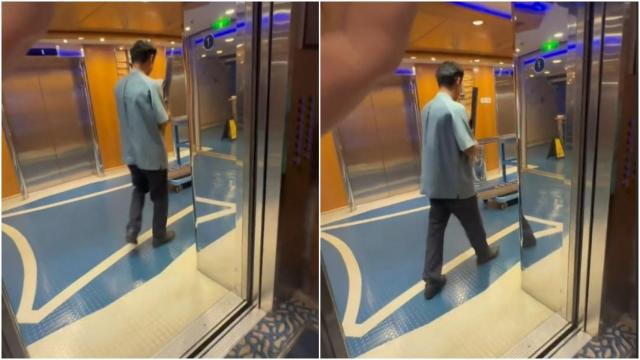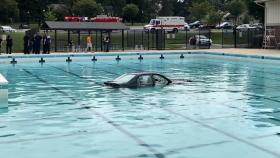
La misteriosa masacre resuelta por la BBC gracias a Google Maps
En la Jungla. La cadena británica ha resuelto el misterio que rodeaba al asesinato de dos mujeres y dos niños en África gracias a una espectacular investigación usando Google Maps.
24 septiembre, 2018 20:21La cadena británica BBC acaba de volver a demostrar por qué es uno de los referentes periodísticos a nivel mundial. Sus indagaciones a partir de un vídeo que se hizo viral el pasado mes de julio han logrado encajar todas las piezas de un cruel rompecabezas.
El vídeo mostraba el asesinato a sangre fría de dos mujeres y dos niños pequeños a manos de un grupo de soldados. Solamente había trascendido que la masacre de estas personas inocentes habría tenido lugar en algún rincón de África. La BBC ha explicado todos los pasos de su investigación en un hilo de Twitter. El resultado final es un reportaje que lleva por título Anatomía de un asesinato:
THREAD
— BBC News Africa (@BBCAfrica) 24 de septiembre de 2018
In July 2018, a horrifying video began to circulate on social media.
2 women & 2 young children are led away by a group of soldiers. They are blindfolded, forced to the ground, and shot 22 times. #BBCAfricaEye investigated this atrocity. This is what we found... pic.twitter.com/oFEYnTLT6z
Comienzan publicando el vídeo, al que han cortado el sangriento final; pero aun con eso avisan de que se trata de imágenes "angustiosas":
This is the video that went viral. We’ve cut out the ending, but - WARNING – it’s distressing. pic.twitter.com/6JJrdJqurW
— BBC News Africa (@BBCAfrica) 24 de septiembre de 2018
Cuando el vídeo se difundió a través de medios de comunicación y redes sociales se hablaba de que el escenario podría pertenecer a Camerún o a Mali:
Immediately, a fierce debate began on social media.
— BBC News Africa (@BBCAfrica) 24 de septiembre de 2018
Some said this happened in Cameroon. Others said it was Mali. pic.twitter.com/hbhM2hzEYu
El Gobierno camerunés se apresuró a calificar de "fake news" las imágenes, asegurando que su ejército no usa esas armas y que los uniformes no pertenecían a sus tropas:
In July, the Cameroonian govt dismissed the allegations as “Fake News.”
— BBC News Africa (@BBCAfrica) 24 de septiembre de 2018
They claimed the guns were not those carried by the Cameroonian military.
They said the camouflage pattern was not used in the Far North.
They asked why the soldiers were not wearing full combat gear. pic.twitter.com/4peZmjISCY
¿Dónde ocurrió?
Los periodistas aumentaron la imagen del vídeo y vieron algunas pistas que podrían ser útiles para identificar el lugar. En concreto, los primeros segundos muestran el perfil de una cordillera:
So we took a closer look at the video…and found clues that prove the government was wrong.
— BBC News Africa (@BBCAfrica) 24 de septiembre de 2018
We’ll start with the location. Where did this happen?
The first 40 seconds of the video capture a mountain range with a distinctive profile pic.twitter.com/Eb70XuGL8I
El chivatazo de una de sus fuentes camerunesas les sirvió para acotar su búsqueda a través de Google Earth:
After a tip off from a Cameroonian source, we found an exact match for that ridge line on Google Earth pic.twitter.com/niJoH9w3nX
— BBC News Africa (@BBCAfrica) 24 de septiembre de 2018
Así averiguaron que se trataba de un camino de tierra en las afueras de la ciudad de Zelevet, en el extremo norte de Camerún, cerca de la frontera con Nigeria. En esta misma zona el ejército lucha contra el grupo yihadista Boko Haram:
It places the scene on a dirt road outside a town called Zelevet, in the Far North of Cameroon, close to the border with Nigeria.
— BBC News Africa (@BBCAfrica) 24 de septiembre de 2018
This is the region where Cameroonian soldiers are fighting the jihadist group Boko Haram. pic.twitter.com/9tmS8hPie3
Con la ubicación general, empezaron a fijarse en los detalles del terreno y los relacionaron con las imágenes de satélite:
Once we had the general location, we looked at other details in the film – tracks, buildings, trees – and matched them precisely to features visible on satellite imagery. pic.twitter.com/IzKuyKzao8
— BBC News Africa (@BBCAfrica) 24 de septiembre de 2018
Y así dieron con el punto exacto:
Putting all this evidence together, we can say with certainty that the killings happened herehttps://t.co/ION682W82n pic.twitter.com/kF0CM0KHbr
— BBC News Africa (@BBCAfrica) 24 de septiembre de 2018
¿Cuándo sucedió?
Con la incógnita del dónde despejada, el grupo de periodistas pasó a intentar determinar cuándo había sucedido. Un edificio que se ve en las imágenes no tenía paredes en las imágenes de satélite tomadas en noviembre de 2014, así que habría ocurrido después:
When did this happen?
— BBC News Africa (@BBCAfrica) 24 de septiembre de 2018
Again, the video contains clues.
This building is visible in the video. But satellite imagery reveals that, back in November 2014, the walls around it had not yet been built.
The killing happened after November 2014. pic.twitter.com/XODYqL5LRY
Otro edificio da más pistas. Las imágenes del satélite muestran que en febrero de 2016 ya no existía, por lo que los asesinatos ocurrieron antes:
The video also shows this building. Satellite images show us that, by February 2016, it had been demolished.
— BBC News Africa (@BBCAfrica) 24 de septiembre de 2018
The killings happened before February 2016. pic.twitter.com/EdBqLQHStE
Sabían que había pasado durante la estación cálida porque un sendero que se ve en el vídeo solo aparece en el satélite entre enero y abril, de modo que acotaron aun más la fecha a comienzos de 2015:
We know that the murders took place in the hot, dry season, because this footpath – just visible in the video – only appears on the satellite imagery between January and April.
— BBC News Africa (@BBCAfrica) 24 de septiembre de 2018
That makes it probable that we’re looking at early 2015 pic.twitter.com/Uotw9w25mY
Las sombras de los soldados facilitaron la obtención del ángulo y la dirección del sol para que los periodistas confirmasen que los asesinatos habrían ocurrido entre el 20 de marzo y el 5 de abril de 2015:
Notice that the soldiers, like moving sundials, cast shadows on the track.
— BBC News Africa (@BBCAfrica) 24 de septiembre de 2018
A simple formula tells us the angle and direction of the sun.
This corroborates our conclusion on the date, and narrows the timeframe further: the killings happened between March 20 and April 5th 2015 pic.twitter.com/KC8HEvKFuS
¿Quiénes son los asesinos?
Con el escenario localizado y la fecha acotada, tocaba resolver la identidad de los soldados que ejecutaron a las mujeres y niños partiendo de la base de que eran soldados del ejército camerunés:
We know where. We know when.
— BBC News Africa (@BBCAfrica) 24 de septiembre de 2018
But who are the men who killed these women and children?
We’ll start by establishing that these are members of the Cameroonian military. pic.twitter.com/SqyL9yOPQf
Las declaraciones del Gobierno del país descartaban que el armamento fuese utilizado por sus hombres, pero el Zastava M21 fabricado en serbia, aunque raro en el África subsahariana, sí se utiliza entre sus tropas:
The government’s July statement claimed that the guns seen in the video are not those used by Cameroonian troops.
— BBC News Africa (@BBCAfrica) 24 de septiembre de 2018
But this is a Serbian-made Zastava M21. It’s rare in sub-Saharan Africa, but it *is* used by some divisions of the Cameroonian army. pic.twitter.com/vZ6xdwpC5O
Tampoco el uniforme estaba reconocido por el Gobierno, que sostenía que en la zona norte usan colores más pálidos adecuados al desierto; pero la BBC encontró unas imágenes de soldados en Facebook etiquetadas en Zelevet y usando la misma ropa que en el vídeo del asesinato:
The govt also claimed that Cameroonian soldiers in the Far North wear pale, desert-style fatigues, not the darker, forest-style camouflage seen in the video.
— BBC News Africa (@BBCAfrica) 24 de septiembre de 2018
But we found these images on Facebook – tagged to Zelevet – of soldiers wearing the type of camouflage seen in the video pic.twitter.com/ROVP1q6tcZ
El Gobierno también había cuestionado que los soldados no usaban el equipo de combate completo, pero desde la BBC afirman que no lo hacían porque no estaban patrullando sino a pocos metros de un puesto avanzado:
The govt also asked why the soldiers in the video were not wearing full combat gear – heavy helmets, bulletproof vests, and rangers boots.
— BBC News Africa (@BBCAfrica) 24 de septiembre de 2018
The answer is that they were not out on patrol. They were just a few hundred metres away from this combat outpost pic.twitter.com/lBsnabqXyr
Localizaron ese puesto avanzado de combate en un reportaje de Channel 4 News que se grabó en el lugar en el año 2015 y combinaron las imágenes con las del satélite:
We know this is a combat outpost because we found a @Channel4News report that was filmed here in 2015 – and we matched the features visible in that report to the details we see on satellite imagery. pic.twitter.com/nmtD8cm0Ag
— BBC News Africa (@BBCAfrica) 24 de septiembre de 2018
Durante el mes de agosto el Gobierno de Camerún cambió de postura y eso sirvió para que la investigación obtuviese nuevas pistas. El ministro de Comunicación anunció que siete militares estaban arrestados e investigados:
In August, there was a sudden change in the govt’s position.
— BBC News Africa (@BBCAfrica) 24 de septiembre de 2018
After weeks of denying that these killings took place in Cameroon, the Minister of Communication announced that 7 members of the military had been arrested and were under investigation. pic.twitter.com/21idCm0MI4
Entre ellos han identificado a tres de los que "apretaron el gatillo". Uno de ellos es Tchotcho:
We have identified three men who actually pulled the trigger.
— BBC News Africa (@BBCAfrica) 24 de septiembre de 2018
One of them is this man, introduced in the video as “Tchotcho” pic.twitter.com/lBtnhmlpNt
Hallaron un perfil de Facebook que vinculaba ese apodo a un soldado llamado Cyriaque Bityala, uno de los nombres de los investigados que aparece en la lista del Ministerio:
We found a Facebook profile that links the nickname 'Tchotcho' to a soldier called Cyriaque Bityala.
— BBC News Africa (@BBCAfrica) 24 de septiembre de 2018
The name Cyriaque Bityala also appears on the government’s list of men now under investigation. pic.twitter.com/gSN6HMlV0W
La BBC confirmó la identidad del soldado a través de un ex militar camerunés que pidió que su nombre no trascendiese:
The BBC also spoke with a former Cameroonian soldier, who asked not to be named.
— BBC News Africa (@BBCAfrica) 24 de septiembre de 2018
He confirmed that this is ‘Tchotcho’ Cyrique Bityala pic.twitter.com/vBqkD3ZsiD
Al final del vídeo se le vuelve a ver vendándole los ojos a la niña que está a punto de matar:
At the end of the video, we see him again - blindfolding the litte girl he is about to kill.
— BBC News Africa (@BBCAfrica) 24 de septiembre de 2018
A few seconds later, he draws his weapon and opens fire. pic.twitter.com/YB341xENfA
Otro de los identificados gracias a su fuente es Barnabas Gonorso:
We identified two other guns used in the killing.
— BBC News Africa (@BBCAfrica) 24 de septiembre de 2018
One of the was in the hands of this man. We see him here blindfolding the women with the baby just before the shooting starts.
Our military source identified him as Barnabas ‘Gonorso'. pic.twitter.com/ofOdRpOwI7
Aunque admiten que no pudieron verificar la identificación, un nombre muy parecido, Barnabas Donossou, apareció 11 días después en la lista del Gobierno:
Although we were not able to confirm this identification, a very similar name – Barnabas Donossou – appeared 11 days later in the government’s list of men now under investigation. pic.twitter.com/KNvdDVib6o
— BBC News Africa (@BBCAfrica) 24 de septiembre de 2018
Un tercer hombre fue identificado como Cobra:
The other gun used in the killing is the Zastava M21 we saw earlier.
— BBC News Africa (@BBCAfrica) 24 de septiembre de 2018
It’s in the hands of a man identified in the video as “Cobra.”
Who is Cobra? pic.twitter.com/mvWRoPvBbQ
Mientras las víctimas mueren, este hombre sigue disparando a sus cuerpos. Otro soldado le grita: "Tsanga, déjalo, están muertos". Él continúa hasta que se vuelve a oír: "es suficiente, Tsanga".
As the women and children are killed, “Cobra” is the last man still firing into the bodies.
— BBC News Africa (@BBCAfrica) 24 de septiembre de 2018
A colleague calls out “Tsanga, leave it, they’re dead.”
When he keeps firing, they call again: “That’s enough, Tsanga.” pic.twitter.com/qy9tFhwhvS
El nombre de Tsanga también aparece en la lista, así que Cobra es realmente Lance Corporal Tsanga:
The name Tsanga also appears on the government’s list of soldiers now under investigation, suggesting that “Cobra” is a nickname for Lance Corporal Tsanga. pic.twitter.com/vVMz2YoJH5
— BBC News Africa (@BBCAfrica) 24 de septiembre de 2018
Los periodistas pusieron las evidencias en conocimiento del Gobierno de Camerún y el ministro de Comunicación, al que se escucha en el audio, confirmó que siete soldados fueron detenidos y están en la cárcel mientras no concluya la investigación:
We put these finding to the government of Cameroon, who said that 7 soldiers have been arrested, disarmed, and imprisoned while under investigation. pic.twitter.com/3zwlmMlaxe
— BBC News Africa (@BBCAfrica) 24 de septiembre de 2018
La declaración del Gobierno, sostienen desde la BBC, "deja claro que todos estos hombres disfrutan de la presunción de inocencia, y que se les dará un juicio justo":
The government statement makes clear that all these men enjoy the presumption of innocence, and that they will be given a fair trial. pic.twitter.com/sFWnE4hmio
— BBC News Africa (@BBCAfrica) 24 de septiembre de 2018
"Las dos mujeres asesinadas a las afueras de Zelevet no recibieron ningún tipo de juicio. No hubo presunción de inocencia para los niños que murieron con ellas", denuncian:
The two women killed outside Zelevet received no trial at all.
— BBC News Africa (@BBCAfrica) 24 de septiembre de 2018
No presumption of innocence was extended to the children who died with them. pic.twitter.com/WG7SFjQ9ml
El reportaje completo puede verse en este enlace:
You can watch #BBCAfricaEye's full report here https://t.co/ffvCcmr2od
— BBC News Africa (@BBCAfrica) 24 de septiembre de 2018
El equipo de BBC África que lo ha hecho posible es el siguiente:
This investigation was produced by @yaolri @danielsilas @benstrick @effisfor and @emmanuelfreudenthal
— BBC News Africa (@BBCAfrica) 24 de septiembre de 2018
Thanks to the analysts and journalists who contributed@Sector035 @obretix@y_vdw @JHarris_UK @MFlumf @trbrtc @ilariallegro@samdubberley@bellingcat @amnesty
Correction to these credits: the other producers on this story are @BenDoBrown and @EmmanuelFreuden. Apologies to @benstrick, who had nothing to do with it, for the tag typo.
— BBC News Africa (@BBCAfrica) 24 de septiembre de 2018





